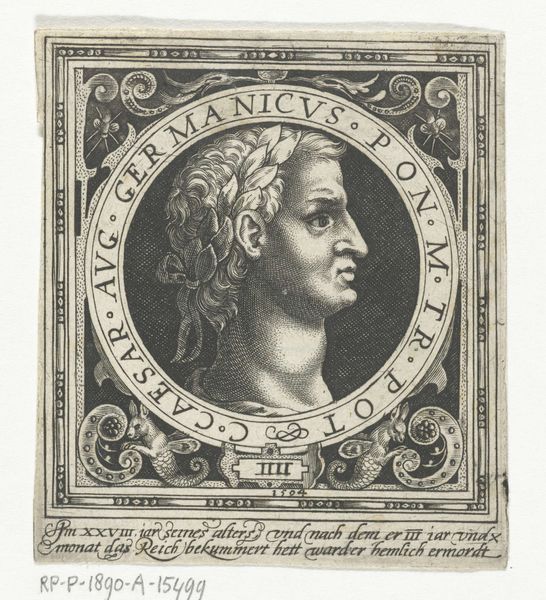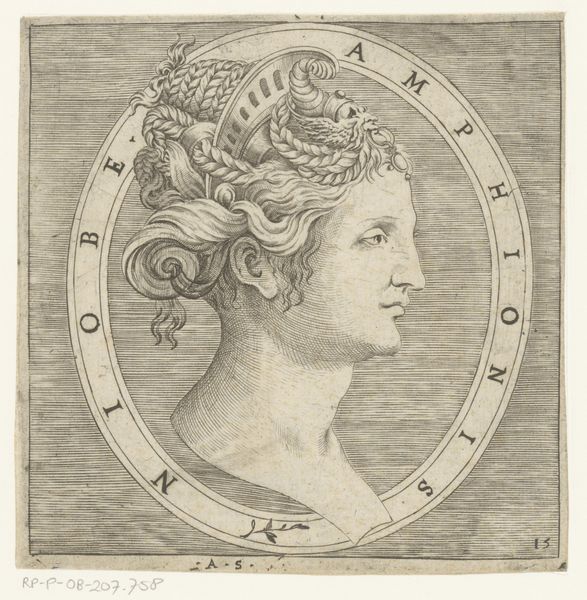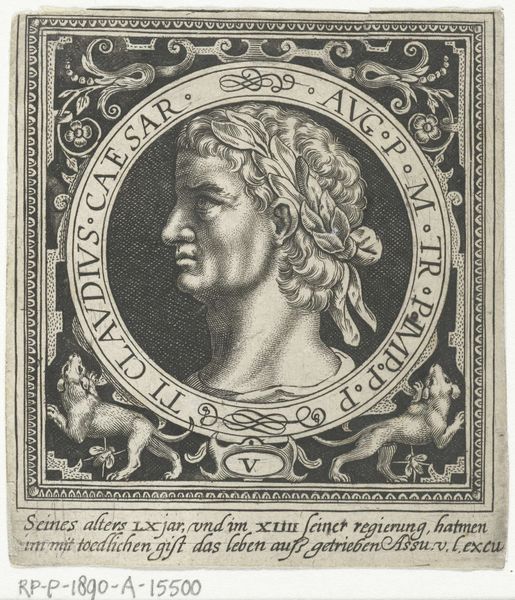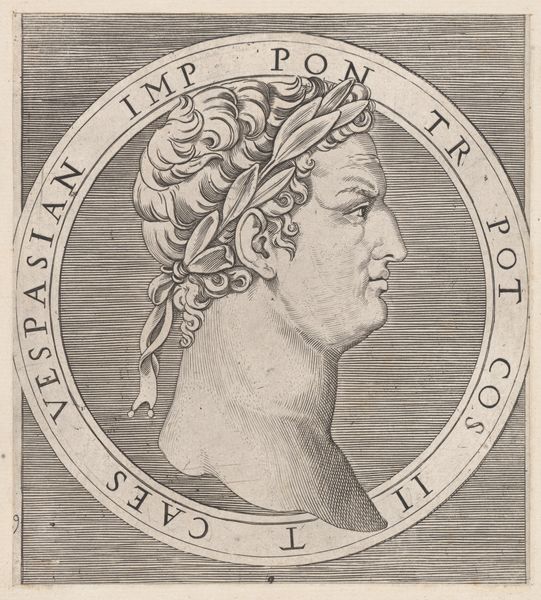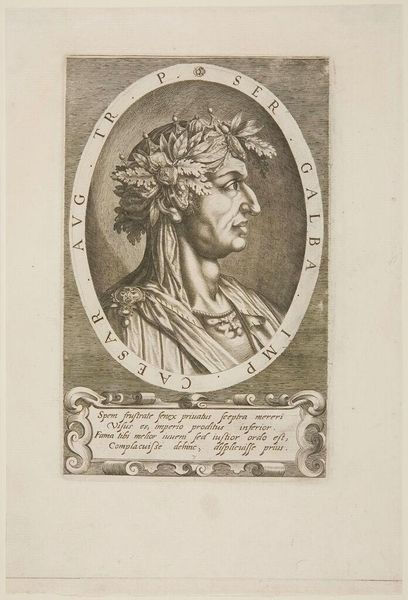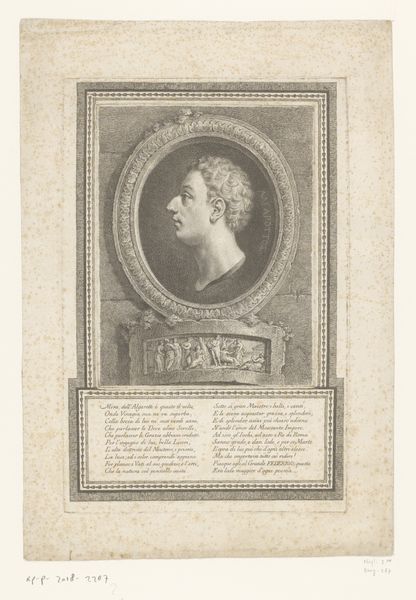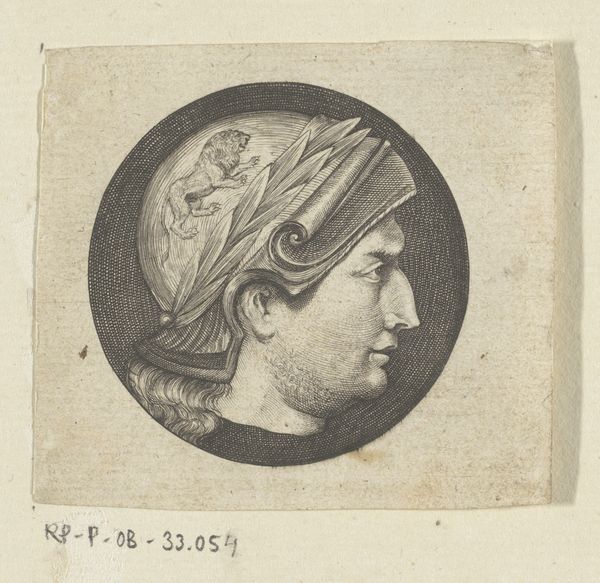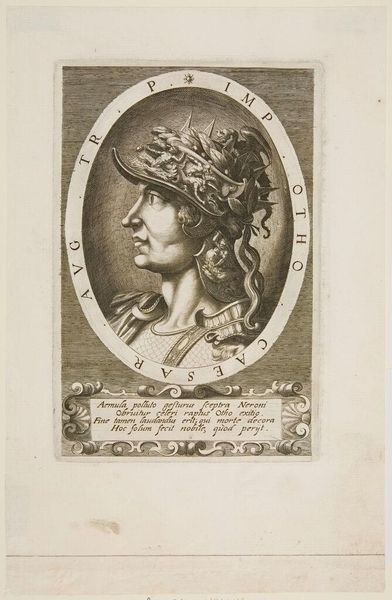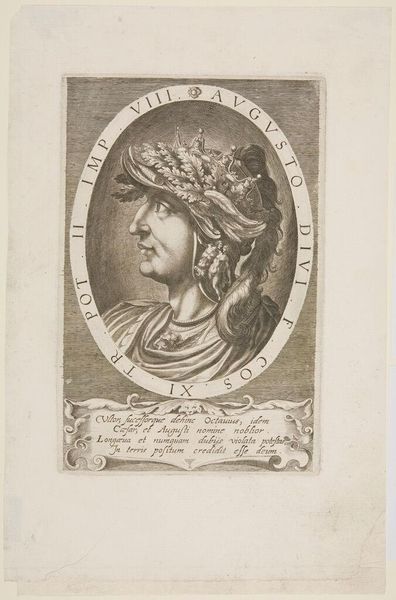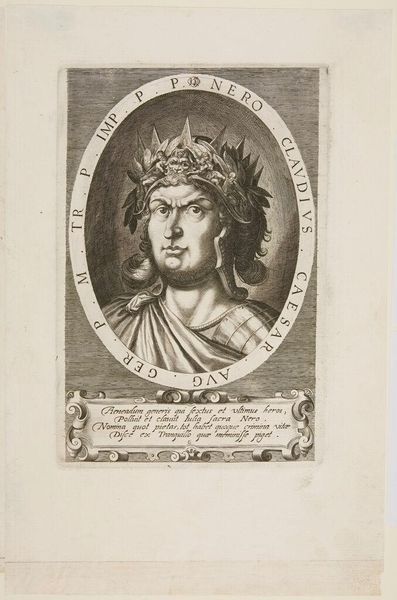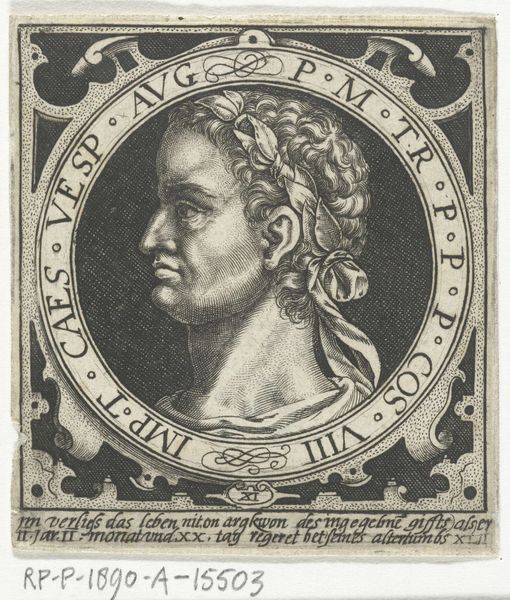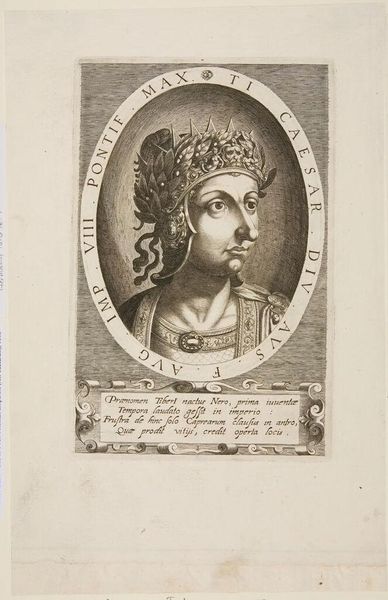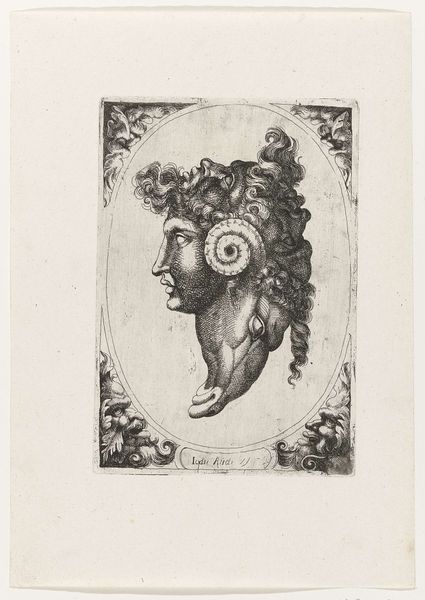
print, engraving
#
portrait
#
baroque
# print
#
figuration
#
ancient-mediterranean
#
line
#
history-painting
#
engraving
Dimensions: height 85 mm, width 75 mm
Copyright: Rijks Museum: Open Domain
Curator: Let’s examine this engraving by Nicolaes de Bruyn, dating back to 1594. It is a portrait of Emperor Augustus rendered on a medallion. The work is held in the Rijksmuseum. Editor: Immediately, I'm struck by how regal it is. The artist presents the emperor not just as a ruler, but almost as a deity. It's all very consciously symbolic. Curator: Exactly. De Bruyn made this during a time when rulers used classical imagery to enhance their own status and legitimacy. This print functions as propaganda. Look at the Latin inscription that encircles the portrait – it proclaims him "Divus Augustus Pater," meaning "Divine Augustus, Father". It speaks volumes about the power dynamics at play and how ancient rulers were reimagined and used in art for political gains during the early modern era. Editor: Absolutely. Note, too, how Augustus is adorned not just with a laurel wreath but something altogether more forceful and unusual: a spiked crown. Its association to imperial status would likely have been immediate for viewers at the time. I think we also need to note the use of animals to project authority—the eagles suggesting Rome. And what of those vulpine forms lurking at the bottom? Curator: Good catch. While the eagles clearly refer to Rome, it's possible that the foxes function in connection to contemporary, humanist political philosophy and possibly even Machiavelli's *The Prince*, where the quality of the fox denotes the prudence to recognize and avoid traps. Augustus here becomes a leader praised for his ability to see, navigate and foresee all obstacles, a true Prince. These visual devices are strategic, aren't they? And their deployment depends on an informed, historically conscious public sphere. Editor: It seems so. What impresses me most is how such a small object, produced through a reproductive medium such as printmaking, would facilitate disseminating a very specific, carefully designed ideological program widely through society. Curator: I agree; this is precisely what's so fascinating about this piece. It serves as a crucial reminder of the role images play in the construction and maintenance of power throughout history. Editor: It makes one ponder the subtle yet profound effects visual language has on our cultural memory and contemporary experiences of political representation, doesn’t it?
Comments
No comments
Be the first to comment and join the conversation on the ultimate creative platform.
